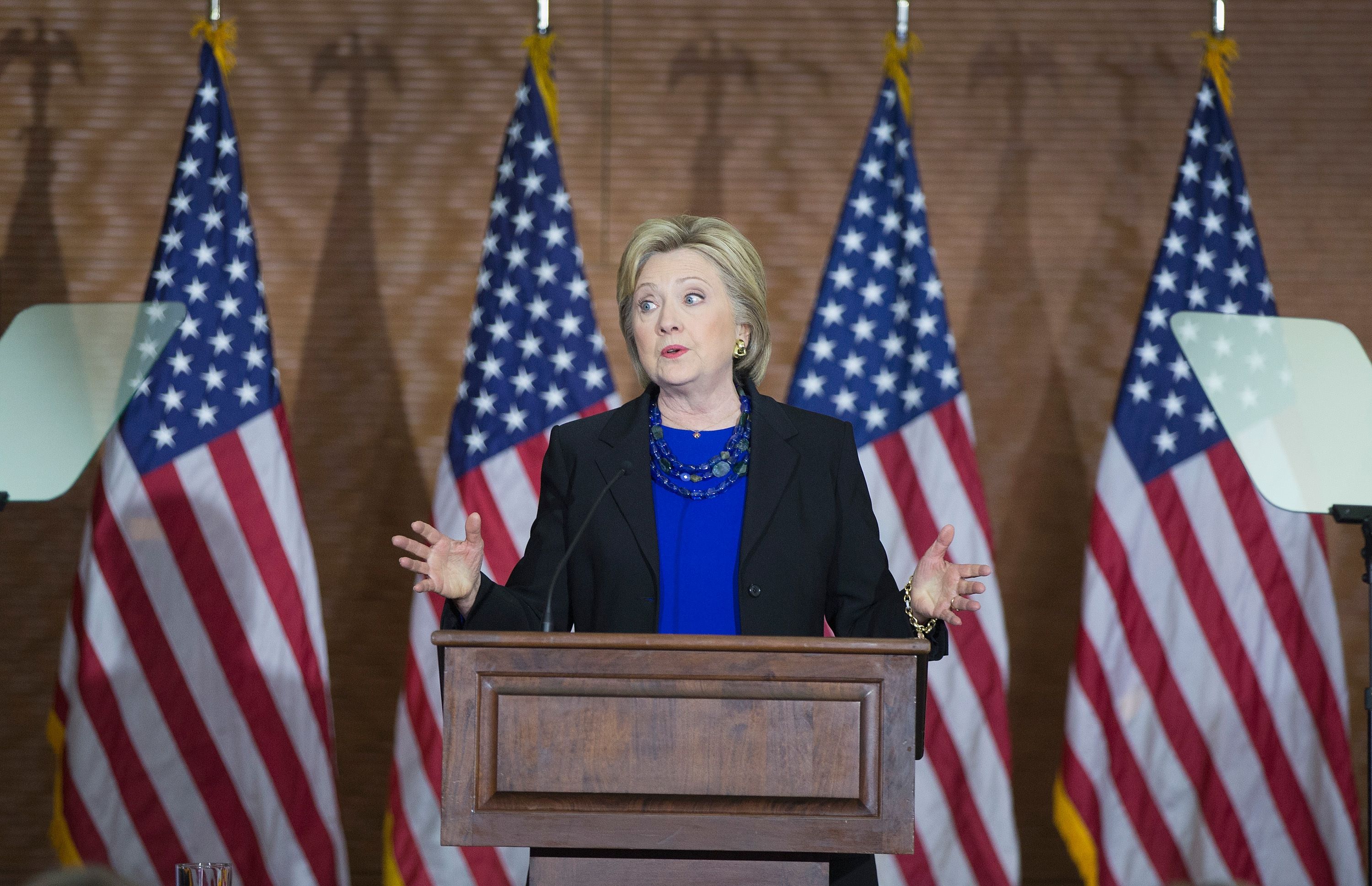
One bit of conventional 2016 campaign wisdom is that Bernie Sanders has pushed Hillary Clinton far to the left. It seems so obvious that even the socialists are celebrating.
Like a lot of conventional wisdom, it's partly true. Clinton's words on taxes, trade, minimum wages, immigration and Wall Street do sound a lot like those of the socialist Sanders. But look past the stump speeches and something more significant becomes clear: Clinton's rhetoric may have changed, but her policy positions haven't. That means her anticipated pivot toward the centre for the general election is also likely to be more oratorical than substantive.
So far, Clinton has pulled off a neat trick. She has gone toe-to-toe with Sanders by calling for higher taxes on the rich, more generous health-care subsidies and criminal-justice reforms. She positions herself to his left on gun control, equal pay for women and immigration.
Even his most steadfast supporters are convinced. "Thanks to Bernie Sanders," says Adam Green, the co-founder of the Progressive Change Campaign Committee, a liberal grassroots group, "Hillary Clinton was made a better candidate." He cites her support for debt-free college, more generous Social Security benefits and jailing Wall Street bankers who break the law as examples of how she moved in Sanders's direction and "remolded the Democratic Party."
But an analysis of her speeches, debates and white papers shows that she's been a careful tactician. On issue after issue, she has left an escape hatch and declined to say things that might cause voter whiplash later. Once she clinches the nomination, Clinton may not need to tack back to the centre much at all.
One example is the minimum wage. When Sanders called for a nationwide $15 minimum, she responded by backing a higher wage too. But hers was for $12, citing economists who say a $15 floor could invite more automation and job losses in depressed and rural areas.
Her escape clause? Unlike Sanders, she would let the states decide. She allows that a higher minimum wage might work in more expensive cities and states -- and they are free to enact one if they choose.
She similarly responded to Sanders's call for free college, one of his trademark issues, by touting a new tuition-subsidy plan of her own. It's less costly and more complicated than Sanders's, involving free community-college tuition for lower-income students and debt-free public college programs for others. Her plan is less generous and means-tested so that the well-off -- including Donald Trump's kids, she likes to say -- wouldn't get the taxpayer subsidy.
She's sharpened her anti-Wall-Street rhetoric, claiming to be tougher than Sanders when it comes to banking regulation. Yet in the fall, her positions aren't likely to get in the way when she taps financiers' wallets to compete against, say, a self-financed Donald Trump.
Unlike Sanders, she doesn't call for breaking up big banks, a position that might demand modification in a general-election campaign. Instead, she proposes to close loopholes in the 2010 Dodd-Frank financial reform law and bring lightly regulated groups, including high-speed traders and private-equity firms, under closer supervision. And despite Sanders's constant criticism of her well-paid speeches to Goldman Sachs, she has never vowed to refuse Wall Street's money.
Clinton has flipped from a supporter of trade liberalisation when her husband Bill Clinton was president to a quasi-anti-trade position. She has said, for example, that she can't support the Trans-Pacific Partnership in its present form, even after helping to negotiate it as President Barack Obama's secretary of state. Yet she's never said she couldn't eventually favor it, leaving wiggle room when Congress hammers out the details, possibly in a lame-duck session after the election.
Both Democratic candidates speak passionately about reducing inequality. But they have vastly different approaches. Sanders favors huge, across-the-board tax hikes on the wealthy. Clinton matches his rhetoric, but her tax hikes are more selective. For higher-income taxpayers, she would raise taxes on the sale of stocks, bonds and other investments held for less than two years, limit the value of income-tax deductions and impose a 4 percent income-tax surcharge on those earning above $5 million.
Wealthy Republicans won't like her tax agenda, but it won't bother many independents and moderate Democrats, many of whom view the Sanders tax increases as radical and unfeasible. To attract these voters in the fall, Clinton plans to unveil a middle-class tax cut in the coming months.
Sanders would expand Social Security benefits broadly and make annual cost-of-living adjustments more generous. To pay for that, he would raise the $118,500 payroll-tax cap. The problem is that Social Security already needs shoring up and, by adding to its costs, Sanders would make it harder to close the funding gap. Clinton, though, manages to match his rhetoric by promising a small benefit enhancement for the elderly poor, and to consider subjecting more investment income to the payroll tax (it's taxed at 3.8 percent now).
And on down the list of issues. When Sanders proposes $1 trillion for infrastructure spending over five years, Clinton answers with a similar, yet more feasible, $275 billion five-year effort. When Sanders says he would replace Obamacare with an expensive Medicare-for-all single payer plan, Clinton defends Obamacare -- yet calls for more generous subsidies. In each case, she can proclaim to primary voters that she's addressing a nagging problem but to general-election voters that she's not busting the federal budget.
Call it political expediency or call it smart politics, but surprisingly little of Clinton's primary strategy will require her to do an embarrassing about-face for the general election. Some of her Bernie-light positions, including calls for slightly more entitlement and health-care spending, both popular among disaffected whites who have flocked to Trump, may even help her broaden her base in November. - Bloomberg View